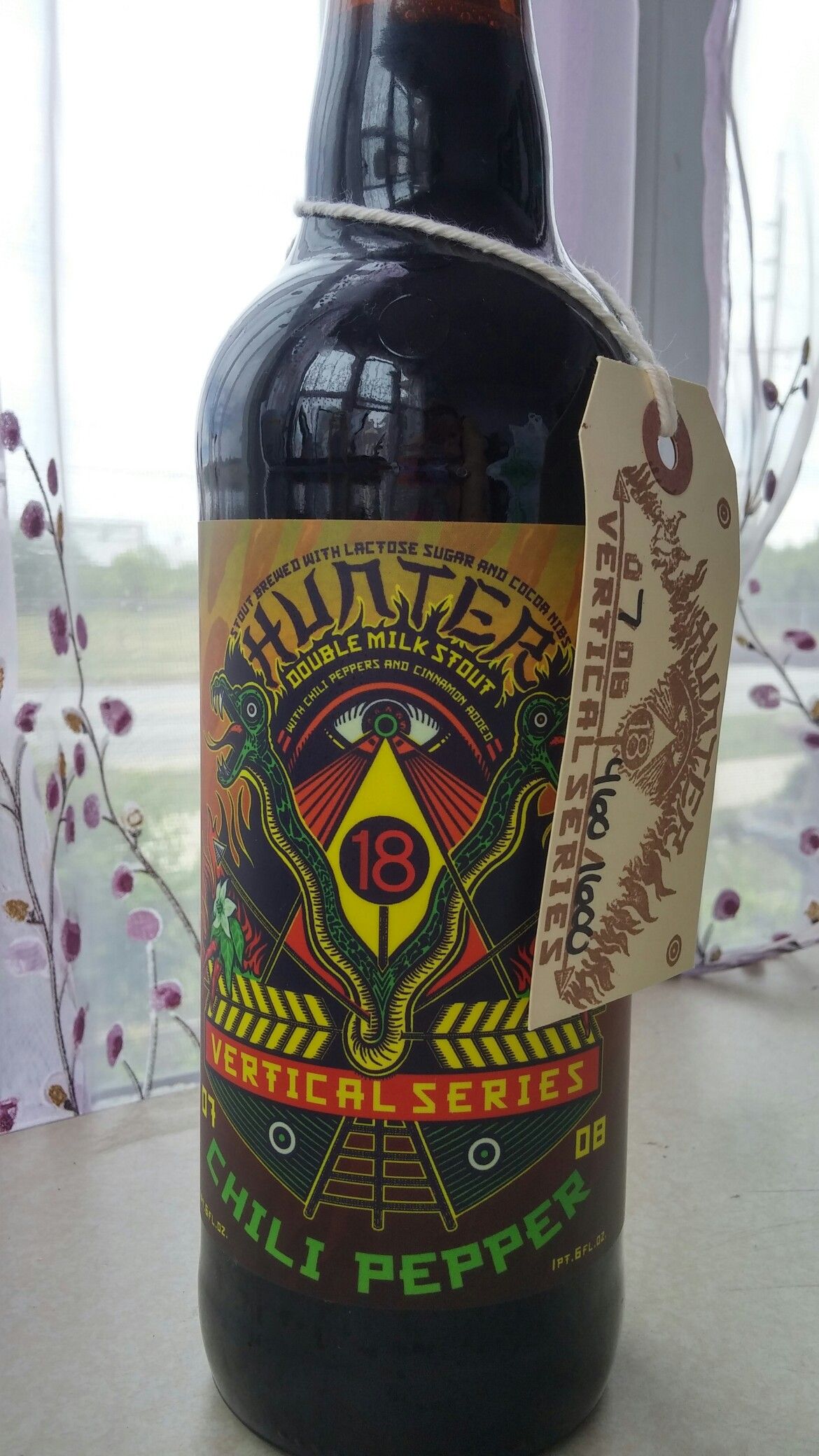

Definitely worth a try if you dig the big, hoppy beers. Well, this is another great beer from Three Floyds. A very minute bit of warmth was felt, however a great deal of flavor was left covering the palate long after each sip. A wonderful amount of carbonation molested my tongue. All in all, it seemed a bit one dimensional, but that’s not necessarily a bad thing. Again, only the most faint savor of bread was accounted for and I even started to pick up a slight dollop of the sugars that were mentioned in the description. Just a wee bit of alcohol was tasted, but I was kind of expecting that at 11.0% ABV. A nice sting of bitterness really danced on the tongue. More pineapple, orange and grapefruit citrus. A touch of mint and pine also with only a light notion of breadiness in the background. It was extremely fresh and lively smelling. A strong floral hint was noticed as well.

Tropical fruits of orange, pineapple and grapefruit. The nose was very citrusy to say the least. Just a beautiful looking beer right here. The size was large, the retention time was great and the sticky lacing looked fabulous. It poured a relatively clear golden/orange color with a slightly off white head that was both smooth and soft. bottle with one of the coolest labels I’ve ever seen. Past columns, supporting documents, and contact information are posted at beer has an ABV of 11.0% and comes in a 22 oz. The Farm and Food File is published weekly throughout the U.S. Besides, Davos Man, now that he’s resurfaced, needs that ethanol to justify a carbon-hauling pipeline he wants to build. That’s a lot of calories (more than 4.3 trillion) that, even if just a small portion were used, could feed some of the estimated 815 million “food-deprived” people around the world this year instead of America’s 275 million cars.Įven suggesting it, however, is farm policy heresy and no ag state politician worth their chair-polished blue suit would ever take that dive into elective oblivion. of corn while it converts more than two times that amount, 5.4 billion bu., into ethanol.

In the 2021/22 corn marketing year, which ends Aug. Meanwhile, few in the Biden Administration, Congress, or farm policy circles mention an immediate source of exportable grain now being sent into the global atmosphere as tailpipe emissions: ethanol.

Department of Agriculture announced it will allow farmers to pull their Conservation Reserve Program acres out early from their final year of contracts to plant additional crops (most likely winter wheat) to meet shortages caused by “Putin’s unjustified invasion of Ukraine…” Worse, like the previous two, the world is again promoting temporary solutions for these inherently long-term, multifaceted problems.įor example, on May 26, the U.S. These three levels of continuing concentration - too few exportable food choices from too few international sources handled by too few, secretive merchandisers - all but guarantees any minor food access problem anywhere in the world soon becomes a major food access problem everywhere in the world.Īnd so it is, again, now in this “third food price crisis in 15 years,” writes Clapp. These firms, she explains, are the “‘ABCD’” of the food trade: “Archer-Daniels Midland, Bunge, Cargill, and Dreyfus” who also “hold large reserves of grain, but do not publicly report them…”Īdding to that concentration is that three key crops - wheat “along with maize and rice… together provide almost half of the calories consumed around the world.” That fact, however, points to an even larger - but rarely discussed - fact, according to the London School of Economics-trained Clapp: Only a handful of nations export food and even fewer international trading firms handle those exports. Indeed, notes economist and essayist Jennifer Clapp in a May 16 post on Civil Eats, 26 countries source over 50% of their wheat imports from the two warring nations. The main cause, we’re told, is Russia’s invasion of Ukraine, two of the world’s key grain-exporting countries. The reporters and editorialists at the Washington Post (“A global famine looms…” April 30), The Guardian (“Apocalypse now?.” May 21), and the United Nations (“Lack of Grain Exports Driving Global Hunger to Famine Levels,” May 19) believe famine will be the next stop on 2022’s bumpy ride.Īnd it very well might–but not for the often-stated reasons. “Stuff” being an academic term for war, famine and - unsaid, of course - hubris. ‘I mean, there’s always angst about globalization, but the big question this year is: How do you get out of any of this stuff?’” “‘There is a real angst about globalization this year,’ said Jason Furman, an economist at Harvard University and former Obama adviser. So, yes, there’s plenty to worry about, a Davos attendee told the Washington Post.


 0 kommentar(er)
0 kommentar(er)
